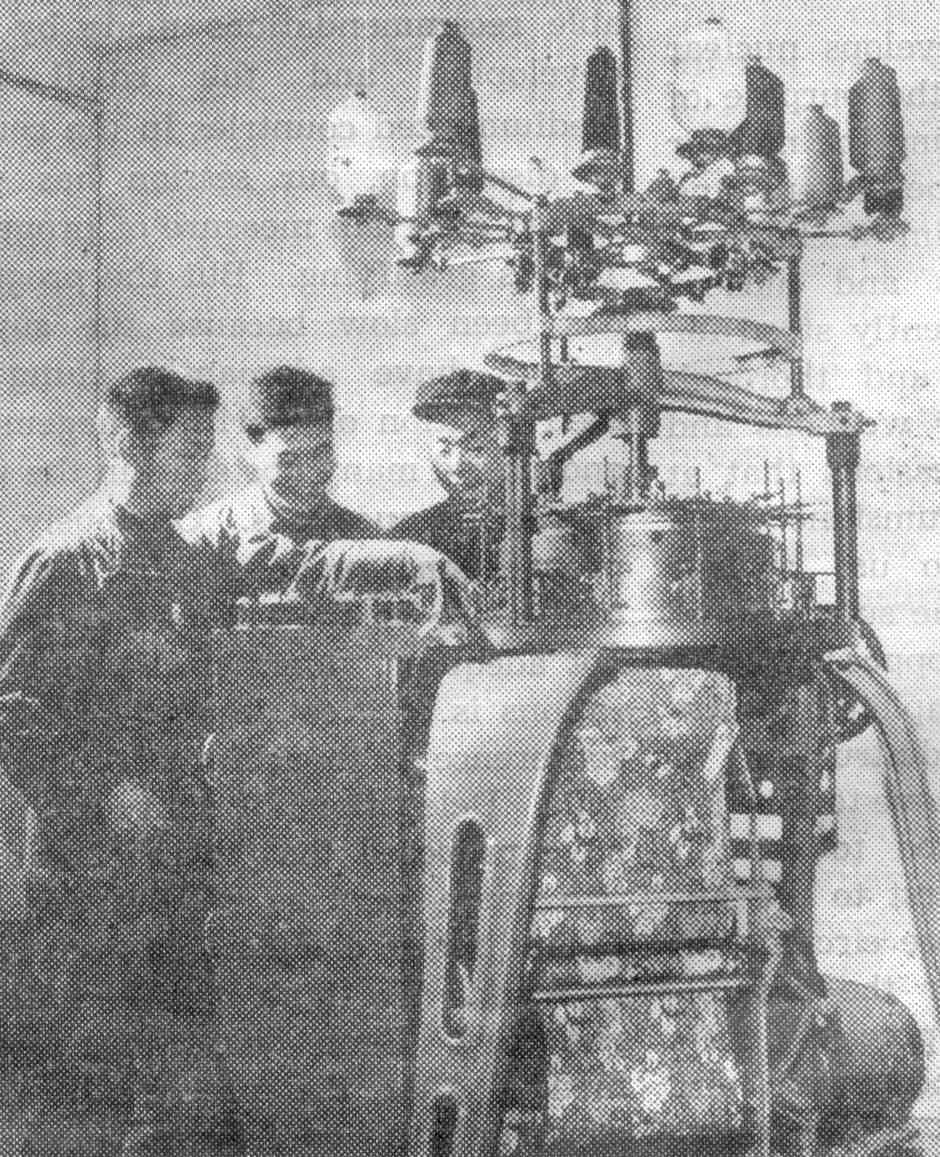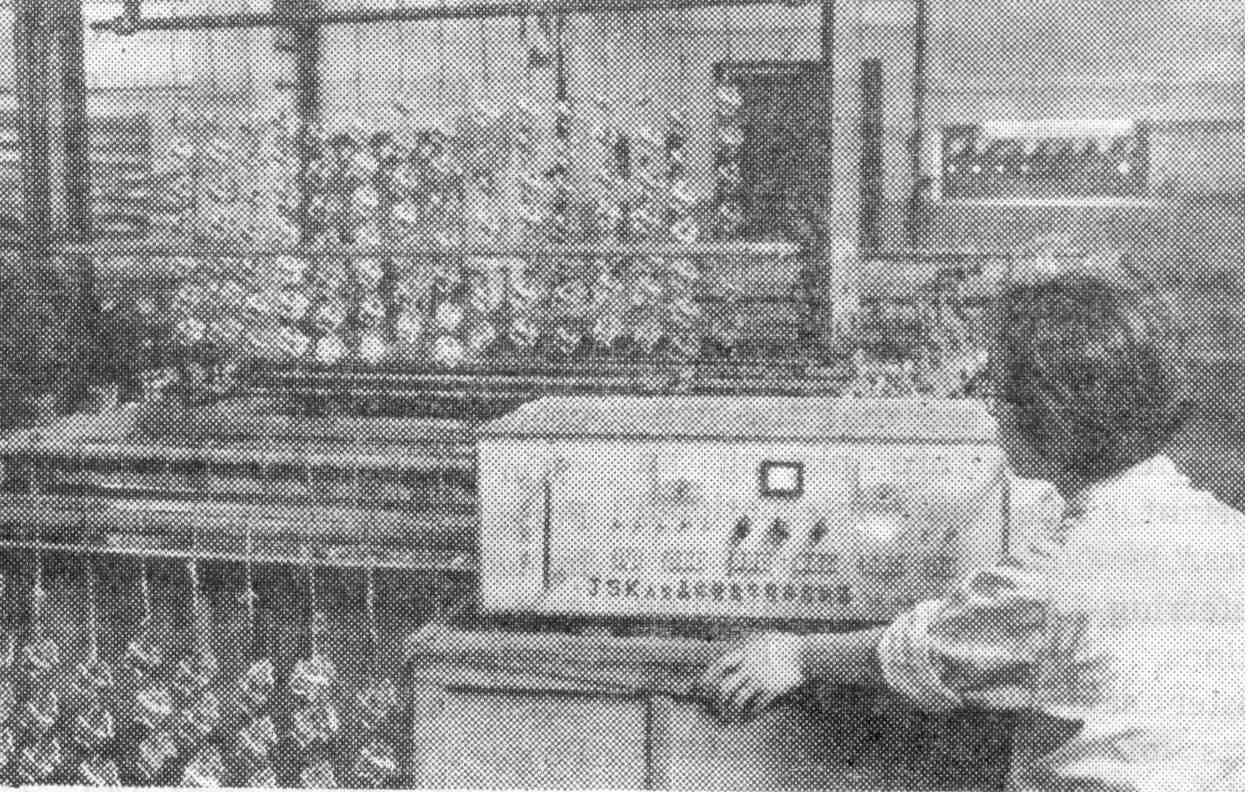Shanghai Applies Electronic Techniques
[This unsigned article is reprinted from Peking Review, #34, Aug. 25, 1972, pp. 14-15.]
SHANGHAI, China’s largest industrial city, is using close to 1,000 electronics techniques in a dozen industrial branches, including the metallurgical, electrical machinery, instruments and meters, chemical, light, textile, handicraft, electric power, communications, telecommunications and medical apparatus and equipment industries. This has helped improve quality, raise the level of automation and productivity and reduce consumption of raw and other materials and electric power; it has also bettered working conditions.
As the electronic industry was practically non-existent in Shanghai prior to liberation, there were no applied electronic techniques to speak of. After liberation, especially after 1958 when there was a great leap forward in the national economy, the electronic industry began to make headway. Further advances were made during the Great Proletarian Cultural Revolution. Compared with 1965, the year preceding the Cultural Revolution, the output of main raw and other materials in Shanghai for making electronic equipment in 1971 showed a big increase. The quantity and range of silicon controlled rectifiers, transistors and other semi-conductor elements as well as electronic equipment have increased many times. Output of semi-conductor elements in 1970 alone was greater than the total output for the previous ten years and the number of varieties was 61 times that of 1965.

Electronic jacquard weft knitting
machine designed and made by workers
of the Shanghai No. 13 Knitwear Mill.
Relatively big advances were made in applied Electronic techniques. For example, four-fifths of the electric furnaces in the city’s metallurgical industry now have silicon controlled electrode elevators. This cuts the time for each heat of steel while boosting output. Some rolling mills have also been fitted with silicon controlled rectifiers to regulate speed. The result is an increase in output and a drop in power consumption.
About 60 per cent of the mercury-arc rectifiers used in the electroplating-electrolytic industry for converting alternating current into direct current have now been replaced with silicon rectifiers. This makes for stabler production, better working conditions and greater economy in power.
Voltage regulators and the exciters for electric generators are among the 198 varieties of electrical appliances transistorized. Electron tubes in 35 per cent of all instruments and meters produced have been replaced by transistors, and eight kinds of electronic table and wall clocks have been trial-produced. The improved designs have simplified work processes and raised quality, while using less materials and prolonging the life-span of products. Makers of medical apparatuses and equipment, with a mind to rural and mountain conditions, have begun to use transistors instead of electron tubes in many of their products (including machinery), such as all-transistor electro-cardiographs, radio nuclide scanners and electro-acupuncture apparatus. Manufacturers of these goods have improved 63 per cent of their products and have begun batch production.
Mass Activity
The work of popularizing and applying electronic techniques is not confined to a group of professionals. Over the past two years and more Shanghai has begun to disseminate knowledge of electronics. Centres for the exchange of scientific and technological knowhow have held exhibitions on transistors and silicon controlled rectifiers and organized other forms of activities to propagate knowledge of electronics. Various industrial departments, universities and colleges and scientific research departments have joined forces to organize special training classes for mastering electronic techniques. Teachers and technicians are encouraged to combine what they teach with production needs and to build up a technical force from among the workers.
Special factories making electronic parts and electronic equipment are working hard to raise the quality and expand the range of products. On their own initiative they have sent personnel out to enterprises concerned to introduce electronic techniques. Collaborating with a post office in a Shanghai district, the No. 19 Radio Factory successfully trial-produced an automated device for the parcels counter. It automatically weighs Parcels, computes the postage and issues receipts, thus reducing labour intensity and raising efficiency.

Self-made electronic electroplating equipment in a small Shanghai factory.
Electricians and other members of a suburban Shanjzhai people’s commune, with the help of two factories, successfully trial-produced a transistor black light lamp to elliminate insect pests. When this lamp is switched on at night it lures hundreds of kinds of insects. During a peak season the catch is two kilogrammes of moths a night. The lamp is beginning to be widely used in tlhe city’s suburbs, replacing an earlier lamp which could be used only in districts with alternating current, and then each lamp needed about 500 metres of cord connecting it to the power source. Transistor black light lamps have none of these drawbacks.
Measuring leather in a Shanghai tannery before dispatch used to be a laborious, time-consuming and frequently inaccurate affair because of the irregular shapes. Some workers of the tannery, backed by their leadership and fellow workers plus help from the district scientific and technical dissemination centre, last year succeeded in making a transistorized measuring device. Now, a piece of leather, regardless of its shape, is measured and recorded once it passes through the machine.
A former toy factory is also making contributions serving the peasants by employing electronic techniques. Catering for the rural people’s communes, this factory has turned out a transistor radio set that is at once a wireless receiving set, a radiogramophone, an amplifier and an intercom system. A multi-purpose device, its size is only that of two thick books. This radio set is also a transceiver, operating within a radius of ten kilometres, and is especially suited for liaison work in rural and hill country.
Products such as the transistor black light lamp, which meet actual production needs in China’s industry and agriculture today, have relatively simple circuits, but their manufacture reflects in a measure the self-reliant spirit of the workers and peasants. It is precisely because of this sort of mass participation that electronic techniques have been able to be disseminated so rapidly.
Contents page for this Peking Review issue.
Return to Peking Review article list